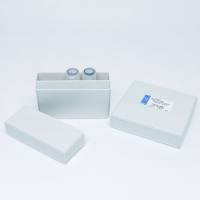Ribosomal RNA Gene Restriction Pattern Analysis (Ribotyping) of H. pylori
互联网
708
Ribotyping, a method used to type strains of bacteria by analyzing the restriction enzyme digestion patterns of the ribosomal RNA (rRNA) genes, was first developed and proposed as a taxonomical tool for the identification and differentiation of bacteria by Grimont and Grimont, in 1986 (1 ). Since its introduction, ribotyping has found wide application in molecular epidemiology as a marker for a variety of bacterial genera, and has been successfully applied to differentiate many bacterial species (1 -6 ), including Helicobacter pylori (7 -14 ). For epidemiological study, this typing method can be used to trace the source of infection or outbreak, determine the mode(s) of transmission, or monitor the distribution, movement, or occurrence of a particular strain of bacteria. For clinical study, it can be used to assess the role of an organism in clinical disease, such as the monitoring of treatment regimens to determine whether clinical relapse is caused by reinfection with a new resistant isolate, or recrudescence caused by the original colonizing strain that has developed resistance to the antibiotic used (13 ). It can also determine whether an infection is caused by multiple strains or by a single strain (13 ).









